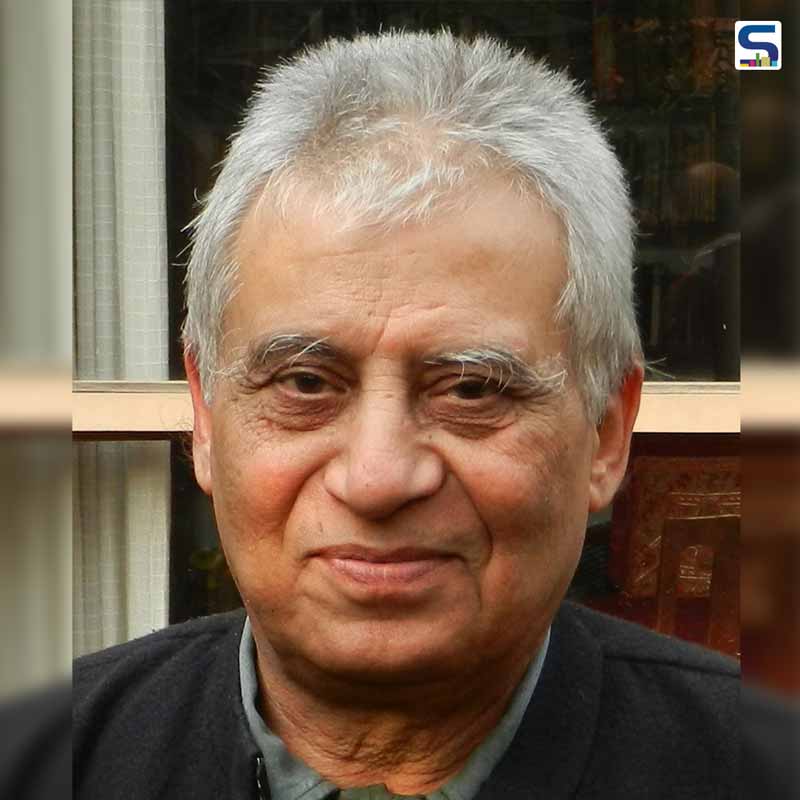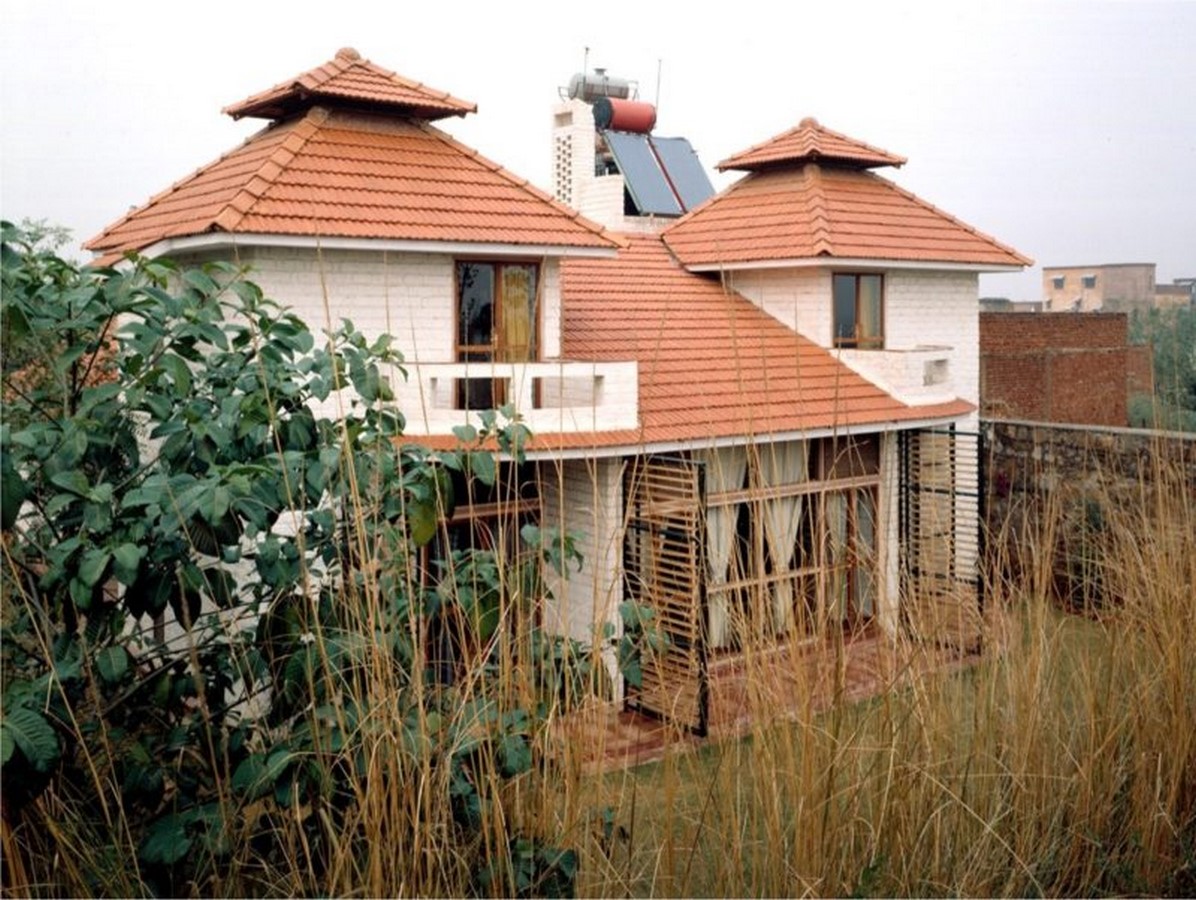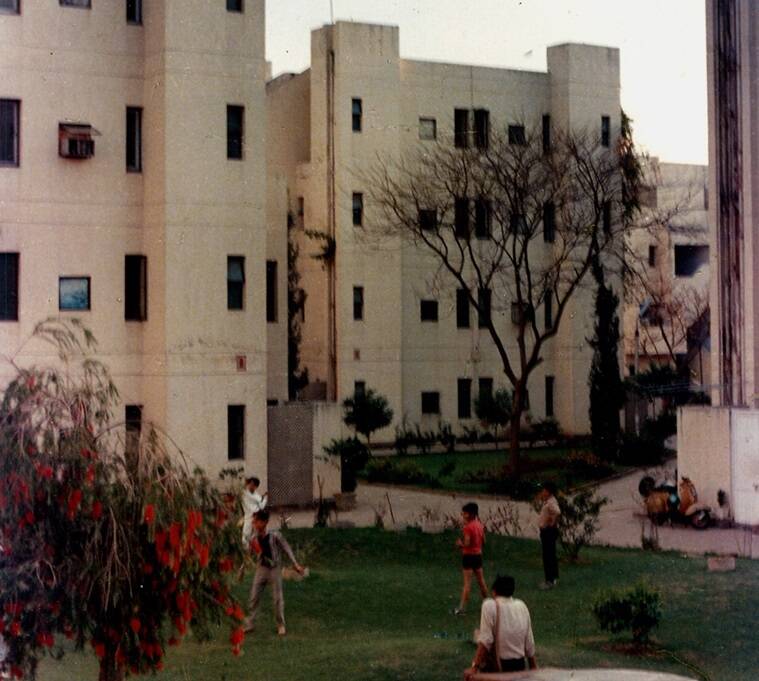
Munishwar Nath Ashish Ganju or M.N. Ashish Ganju- a renowned urban architect, a radical thinker, a thoughtful leader in Indian architectural philosophy, an insightful teacher, an excellent mentor and a wonderful writer- passed away on May 5 due to COVID. He was 78. He left behind his wife Neelima, three daughters Surya, Tara and Chandani, and an unparalleled legacy. SURFACES REPORTER (SR) pays tribute to the phenomenal architect.
Also Read: SR TRIBUTE: A Man without Mask-A tribute to Architect Pradeep Sachdeva
The Delhi-based architect was working on the urban periphery to show the principle of urban renewal by citizens. He was teaching at the School of Planning and Architecture, and the Indian Institute of Technology in New Delhi. Also, he was the founding Director of TVB School of Habitat Studies, New Delhi, Visiting Professor at the University of East London, U.K., and the Universita IUAV di Venezia, Italy. The architect has won several prizes in national and international design competitions.
Architectural Training
M. N. Ashish Ganju got architectural training at the Architectural Association School of Architecture, London, in the mid-60s. He was 19 years old when he arrived in London for studies.
 Dolma Ling Nunnery at Dharamshala
Dolma Ling Nunnery at Dharamshala
Returned to India For Higher Education
When most of his peers were going for higher studies across the Atlantic, his deep instinctive urged him to return to India. In 1967, he returned to India for higher education, and since then, he had been researching here through teaching and practice. In an interview, he said, “Freshly qualified from the Architectural Association in London, I returned home to New Delhi in 19The architecture was a mission, and it was to be accomplished in India where I had grown up.”
Also Read: SR TRIBUTE: A Brilliant Architect Amala Sheth Left To Her Heavenly Abode
Ground Reality Was Different
When he returned to India, he found that whatever he had learnt and what was on the ground was totally different; the realities were a mismatch. In his own words, “Over the last few years, my senses had grown accustomed to the perceptual experience of London in the sixties, and returning home, the built environment of North India presented a familiar yet strangely blurred picture. To me, it appeared that there were no hard edges – to roads, buildings or other man-made objects. People seemed to find their way not by the sense of sight but of sound, rather like bats flying around in the night. It was not only the measure of space which raised new questions for me, but my sense of time presented, even more so now, a new idea of dimension.”
 Residence for Dr. Kubba-Paschim Vihar
Residence for Dr. Kubba-Paschim Vihar
The architect observed that the Western studies did not actually comprehend the Indian environments, the way Indians lived, and cities evolved. He started teaching at the School of Planning and Architecture (SPA), New Delhi, in the early 70s, and that’s where he came across architect Narendra Dengle.
Discovery of Architecture
In 2014, he co-authored an essay with Dengle on the ‘Discover of Architecture’ in 2014. The essay gave a definitive view of what we had not noticed in our reading of modern architecture in India.
 The Discovery of Architecture by M. N Ashish Ganju and Narendra Dengle
The Discovery of Architecture by M. N Ashish Ganju and Narendra Dengle
In 1978, the architect worked with UNICEF as an advisor to the government of India to build rural community centres. He also worked as an advisor for maintenance of the Rashtrapati Bhawan and renovation of the Lutyens Bungalow Zone.
GREHA – The Residence and Studio (Delhi)
Ar Ganju was the founder and president of the voluntary organization ‘Greha’, that was his residence as well as studio. It is located in a rapidally urbanizing area on the peripheries of New Delhi.
 GREHA – The Residence and Studio of M.N.Ashish Ganju- Delhi
GREHA – The Residence and Studio of M.N.Ashish Ganju- Delhi
It is a society for research on habitat design, environment development and architecture. The Greha is a Sanskrit word meaning both ‘planet’ and ‘home’, a word the architect felt fitted nicely into his architectural philosophy.
His Works
One of the current design projects of the architect was for the Tibetan refugee community in Dharamsala. He joined this work by researching the practice of sustainable architecture in the Himalayas. His other great works include Institutional Campus for the Aryabhatta Research Institute of Observational Sciences, Manora Peak, Nainital, Uttaranchal, 2004-ongoing. Development plan for Ayanagar Village, New Delhi, for the Government Of Delhi / GREHA, 1999-ongoing. MSOFT Office at UNITECH Trade Centre, Gurgaon, 2004-05. House and Studio for Self, Aya Nagar, New Delhi. 1999-2001.
Re-development Plan for the Lutyens Bungalow Zone, for the Ministry Of Urban Development, Government Of India, 1998-99. Andaman and Niocobar Islands. 1988-91. Tribal Dwelling, Car Nicobar, Andaman and Nicobar Islands, 1987. K.D. Sharma house, New Delhi. 1987-89. Orphanage for the SOS Children’s Villages of India at Bhopal, Madhya Pradesh, 1987-2000. Master Plan for Ashram on the Ganga for Narayan Mahaprabhu at Allahabad, UP,1971. Low-income Housing Development for the Housing and Urban Development Corporation, New Delhi, Competition Proposal (4th Prize)1975, to name a few.
Noteworthy Projects
His projects were spreading across the country, from Kashmir to Delhi, Bhopal to Port Blair. His first major project- Press Enclave residential complex in Saket started in 1972, where he combined houses into five blocks to keep the scale human and intimate.
 Press Enclave, Delhi
Press Enclave, Delhi
This project design is based on energy efficiency using solar passive technqiues, making it the first green building in modern India. Another project, Dolma Lung Nunnery at Dharmshala (1992) was created to honour Buddhist principles of living with nature. His project in Aya Nagar was praiseworthy. Sheila Dixit, the chief minister of Delhi, visited Aya Nagar in 1999; she found the project inspiring and declared it as a model village, apt for development. Other noteworthy projects include Residence for Dr. Kubba, at Paschim Vihar, New Delhi, 1981-84, Basti Hazrat Nizamuddin : A conservation programme- Delhi, etc.

Basti Hazrat Nizamuddin : A conservation programme- Delhi
Everyone who knows architect Ganju affirms his unwavering passion for his work, be it in Aya Nagar, researching the value of Indian architecture or his apprehension for sanitation and waste management in the city. The architecture was an intensely spiritual pursuit for him, where he merged his learning of Tibetan Buddhism and Kashmiri Shaivism. He was the man who never stopped pursuing beauty in architecture.
Source: www.greha.org, www.architexturez.net
SR TRIBUTE: A Tribute By WADE ASIA & SURFACES REPORTER to The Passion, Persistence & Prowess of Ar. Revathi Kamath
Join us in SOCIAL MEDIA to stay updated
SR FACEBOOK | SR LINKEDIN | SR INSTAGRAM | SR YOUTUBE | SR TWITTER
Further, Subscribe to our magazine | Sign Up for the FREE Surfaces Reporter Magazine Newsletter